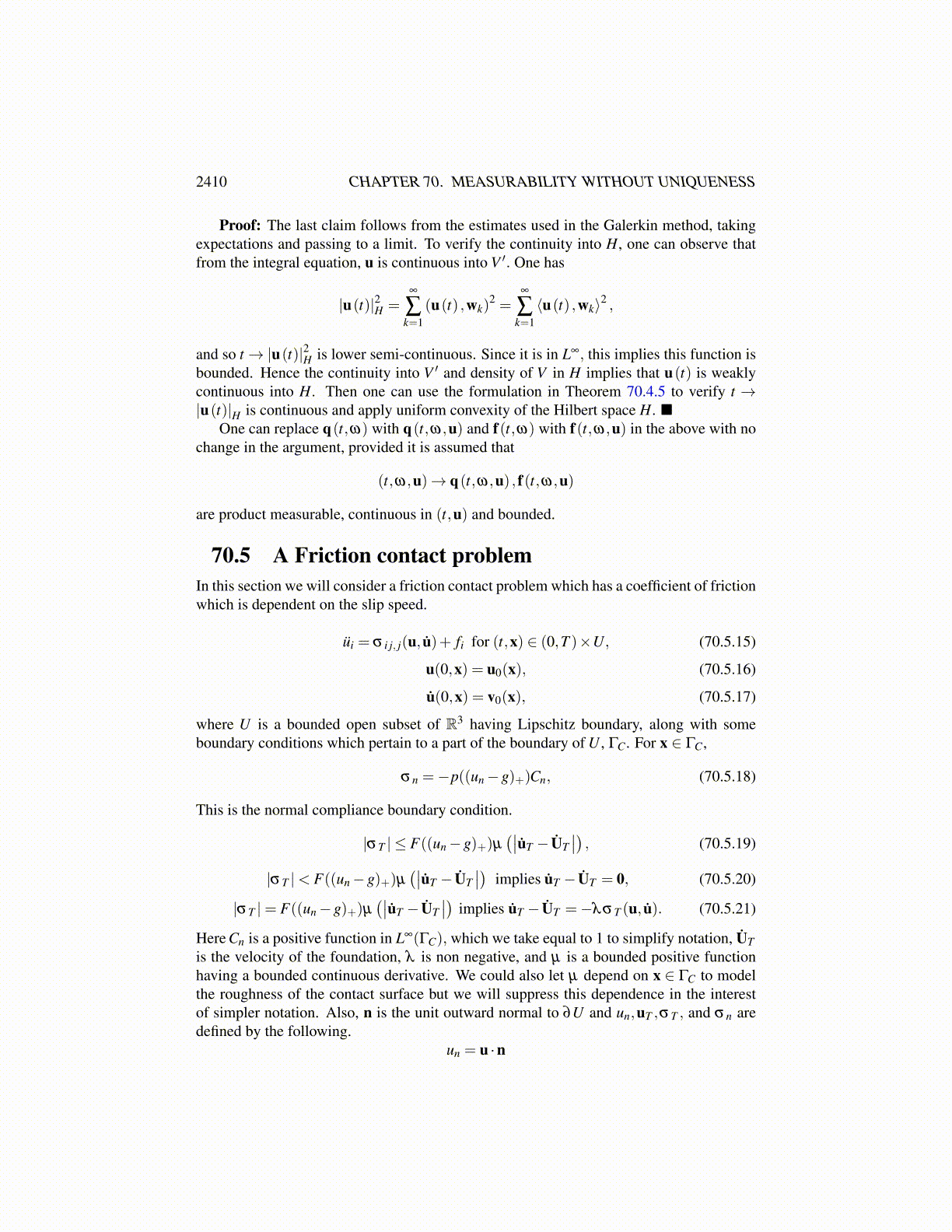
2410 CHAPTER 70. MEASURABILITY WITHOUT UNIQUENESS
What happens with the nonlinear operator N̂? Let w ∈ L∞ ([0,T ] ;V ) . A computationshows then that∣∣∣∣∫ T
0⟨Nun(t)−Nu(t),w(t)⟩dt
∣∣∣∣=
∣∣∣∣∫ T
0
∫U(uni(t)un j(t)−ui(t)u j(t))w j,idxdt
∣∣∣∣≤ ∥w∥L∞([0,T ],V )
∫ T
0
∫U(|un(t)|+ |u(t)|)(|u(t)−un(t)|)dxdt
≤ ∥w∥L∞([0,T ],V )
(∫ T
0
∫U(|un|+ |u|)2 dxdt
)1/2(∫ T
0
∫U(|u−un|)2 dxdt
)1/2
.
This converges to 0 thanks to the estimates and the strong convergence 70.4.10. Similarconvergence holds for the other nonlinear terms B(un (t) ,q) ,B(q,un (t)).
We have shown that for any n≥ m, and w ∈Vm,⟨u′n (t) ,w
⟩V ′,V + ⟨A(un(t)),w⟩V ′,V +
⟨N̂(un(t)),w
⟩= ⟨f(t),w⟩ . (70.4.12)
Let ζ ∈C∞ ([0,T ]) be such that ζ (T ) = 0. Then⟨u′n (t) ,wζ (t)
⟩V ′,V + ⟨A(un(t)),wζ (t)⟩V ′,V +
⟨N̂(un(t)),wζ (t)
⟩= ⟨f(t),wζ (t)⟩ .
Integrating this equation from 0 to T we obtain
−(u0n (ω) ,wζ (0))H −∫ T
0ζ′ (s)(un (s,ω) ,w)H ds
= −∫ T
0⟨A(un (s,ω)),wζ (s)⟩ds−
∫ T
0
⟨N̂(un (s,ω)),wζ (s)
⟩ds
+∫ T
0⟨f(s,ω) ,wζ (s)⟩ds.
Now letting n→ ∞, from the above list of convergent sequences,
−(u0 (ω) ,wζ (0))H −∫ T
0ζ′ (s)(u(s,ω) ,w)H ds
= −∫ T
0⟨A(u(s,ω)),wζ (s)⟩ds−
∫ T
0
⟨N̂(u(s,ω)),wζ (s)
⟩ds
+∫ T
0⟨f(s) ,wζ (s)⟩ds.
It follows that in the sense of V ′ valued distributions,
u′(ω)+A(u(ω))+ N̂(u(ω)) = f(ω) (70.4.13)
along with the initial conditionu(0) = u0. (70.4.14)
This has proved most of the following lemma: